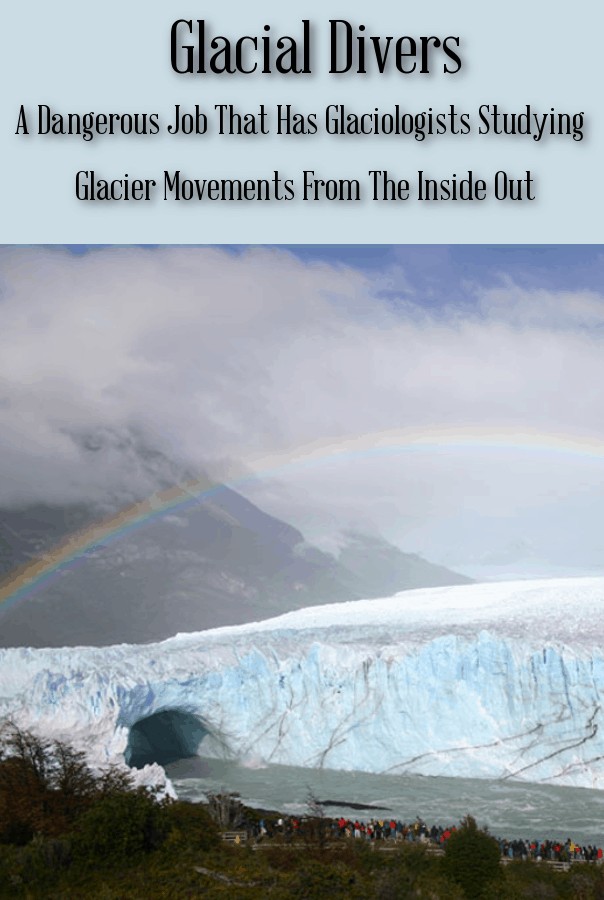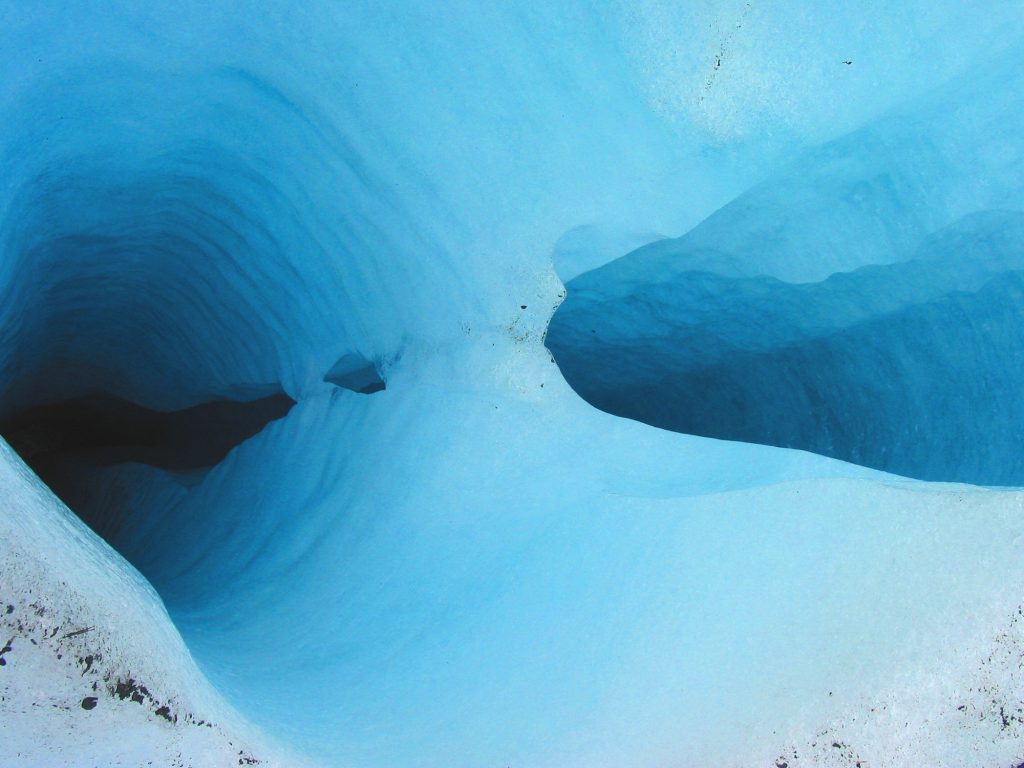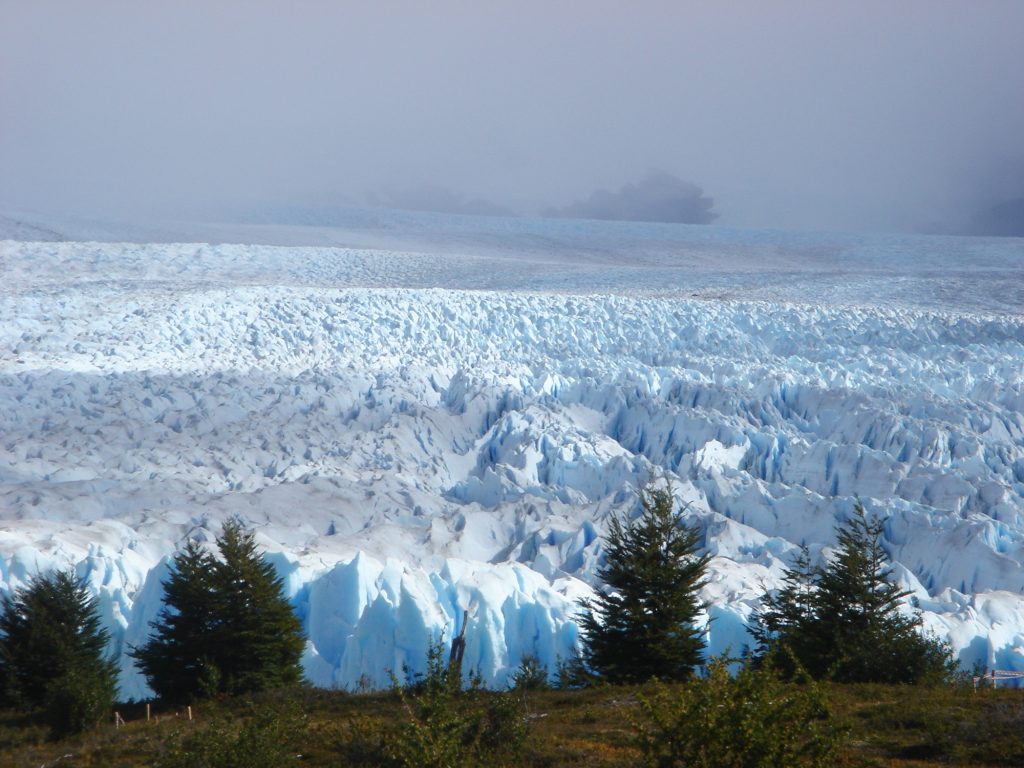 Glaciers are vital geographical features, in part because they serve as an indicator for the overall health of the planet. A hot-button environmental issue today is the loss of mass of most of the world’s glacier ice due to global climate change. To get a better idea of the overall health of a glacier, and to learn more about these fragile formations, scientists, called glaciologists, need to get an up-close look at the glacier…from the inside. That means diving deep into the depths of the ice sheets through natural fissures or openings, or making man-made tunnels. Let us look at the science behind glacier diving in the name of science.
Glaciers are vital geographical features, in part because they serve as an indicator for the overall health of the planet. A hot-button environmental issue today is the loss of mass of most of the world’s glacier ice due to global climate change. To get a better idea of the overall health of a glacier, and to learn more about these fragile formations, scientists, called glaciologists, need to get an up-close look at the glacier…from the inside. That means diving deep into the depths of the ice sheets through natural fissures or openings, or making man-made tunnels. Let us look at the science behind glacier diving in the name of science.
Glaciers hold vast amounts of information about the earth and what the planet’s environment was like thousands of years ago. The frozen ice traps things like pollen, volcanic ash, and gasses and keeps them as an icy record of our past. We can learn what the make-up of the atmosphere was in the past and, perhaps more importantly, how it has changed over time. We can discover facts about microbial life of the past, as well as larger flora and fauna.
Studying glaciers can help us to better understand how the climate of the planet has changed over time. The earth has gone through period of warming and cooling in the last million years. Looking at the layers of ice in a glacier, glaciologists can record how long each cycle of warming or cooling has been, as well as the intervals between them. With this information, scientists and climatologists can get a more accurate picture of the overall climate of earth.
Studying the inner workings of glaciers also help us to understand the mechanics of glaciers. We have all heard that glacial ice is responsible for carving out the Great Lakes and sculpting the valley and hills of the American landscape, but that is a rather simplistic explanation for how these land features have formed. Getting down to the bottom of a glacier…to where the ice contacts the ground…is the best way to observe the process of carving due to glacial retreating and advancing.
 So how do glaciologists get under the ice? It’s not easy feat and not for the faint of heart. In some cases, glaciologists can access the inner bowels of the glacier through naturally-occurring crevasses. Crevasses, not to be confused with crevices that form in rock, are deep fissures or cracks in the ice of a glacier. Crevasses are the result of the movement of the ice at different rates that create unstable pressures that cause breaking along the ice. Most crevasses form vertically and expose the different layers that have stratified in the ice. Depending on the size of the crevasses, glaciologists can use these portals into the ice to descend into the glacier and study the layers of ice. But crevasses aren’t the only means of accessing the inner ice. Scientists can create their own tunnels through the glacier by using hot water to melt an access tunnel. This can be a slow and dangerous process as the ice can be unstable.
So how do glaciologists get under the ice? It’s not easy feat and not for the faint of heart. In some cases, glaciologists can access the inner bowels of the glacier through naturally-occurring crevasses. Crevasses, not to be confused with crevices that form in rock, are deep fissures or cracks in the ice of a glacier. Crevasses are the result of the movement of the ice at different rates that create unstable pressures that cause breaking along the ice. Most crevasses form vertically and expose the different layers that have stratified in the ice. Depending on the size of the crevasses, glaciologists can use these portals into the ice to descend into the glacier and study the layers of ice. But crevasses aren’t the only means of accessing the inner ice. Scientists can create their own tunnels through the glacier by using hot water to melt an access tunnel. This can be a slow and dangerous process as the ice can be unstable.
Once an access point it found or created, the glaciologists are able to enter the inner workings of the glacier. It can be physically and mentally challenging to take a journey beneath the ice. The working conditions are not ideal. They are claustrophobia, cold, and there is the potential for the ice to shift or move without notice.
Because understanding the movement of glaciers is one of the reasons scientists study the ice sheets, the glacier divers are able to install seismic monitors deep in the glacier to record the movement of the ice, in much the same way that seismologists track the movement of earth along earthquake fault lines. Installing the sensors deeper in the glacial ice, and not on the surface, allows for more accurate readings because the information is gathered from much closer to the source of the movement.
This type of research has yielded new information about glacial movement. Glaciologists were able to determine that the bulk of the resistance sliding at the base of a glacier is due to friction between the bedrock and the bottom layer of ice, which is packed with debris such as rocks, dirt, pebbles, and sand. Prior to this discovery, scientists believed that the resistance was not as widespread, but was focused on specific spots along the bedrock where anomalies or obstacles hindered the ice flow.
Glaciologists have been able to further understand the unique features of glaciers. For example, at a certain depth, typically around 490 to 650 feet deep, the ice becomes almost like plastic and forms an impenetrable layer. Water from rain, run-offs, or melting cannot penetrate through this layer so the water switches from moving vertically to moving horizontally, forming ice caves.
The history of the planet as a whole is recorded in the glacier ice. Being able to study the glacial ice sheets from the inside out affords researchers the unique opportunity to peer into this frozen chronology and to use the data they uncover to help protect the fragile glaciers and, by extension, the fragile health of the planet. It takes nerves of steel, physical strength, and mental fortitude to dive into the depths of ancient glacier ice, but the rewards are invaluable.
Sources:
“And Inside? Glacier Caves.” Eniscuola. School, Energy & Environment. Web. 12 Aug. 2018.
Gammon, Katherine. “Science in Ice: Lab Operates Inside a Glacier.” LiveScience. 2 Ja. 2013. Web. 12 Aug. 2018.
Wendel, JoAnna. “Shedding Light on Glaciers From Within.” Penn State University. 26 Aug. 2015. Web. 12 Aug. 2018.
“Why Do Scientist Study Glaciers?” Alaska Satellite Facility. Web. 12 Aug. 2018.
